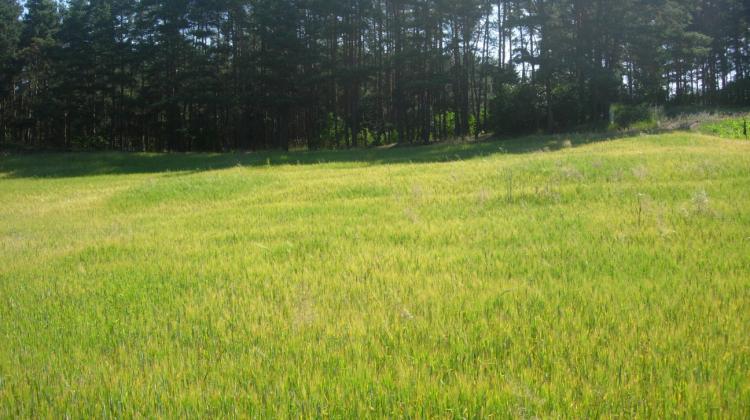Archaeologists discovered lost medieval town in Wielkopolska

For the first time in Poland - with the help of aerial photographs - archaeologists at the same time identified a medieval town and adjacent oval village and owners’ residence.
The discovery was made in January in the village of Niedźwiedziny in Wielkopolska by Marcin Krzepkowski, archaeologist cooperating for many years with the Regional Museum in Wągrowiec, during the analysis of orthophotos, the actual photographic maps of the area in a geodesic matrix, available on www.geoportal.pl.
"The published aerial photos are so accurate that have allowed to spot, in the fields near the village Niedźwiedziny, the crops with different colour, arranged in the shape of houses spread around a central square. I interpreted this system as a medieval urban layout" - Krzepkowski told PAP.
Some of the detected buildings were very large, reaching 10 m in length, with a width up to 9 m. According to preliminary calculations of scientists, in the medieval town there were about 30 built up plots, 20 of them surrounding the square and about 10 by the outgoing streets. They were probably inhabited by no more than 200 people.
North of the urban system there is a clear system of objects which, according to Krzepkowski, are the remains of an ova village. Most researchers associate this form of the village with the colonization of German law in the second half of the 13th century. The centre of this type of settlement was a square called half-village, often with a pond, sometimes a church or tavern.
"About 300 meters south-east of the town, located on an elevation in the Dzwonówka valley, are what we speculate to be relics of the medieval knight\'s estate and old Polish manor" - added Krzepkowski.
On the surface of the fields there visible concentrations of pugging numerous fragments of pottery and charcoal, brought to the surface by plowing. In the same way, archaeologists also selected the possible location of the cemetery, probably associated with local church - added Krzepkowski.
Discovery site is located in an area poorly recognized by archaeologists - Zielonka Forest is dominated by dense forest. Researchers often detect sites in the course of surface surveys, consisting in going through the fields after plowing and searching for fragments of pottery and other objects. Forests effectively impede such actions. The town in the village of Niedźwiedziny was discovered only because its relics are located in cultivated fields, which, however, are surrounded by by the forest.
The disovered town was named Dzwonowo, in the literature frequently referred to as Swanow or Zwanowo. Source query about it was performed by Marcin Moeglich of the Regional Museum in Wągrowiec. The first mention of Dzwonowo date back to the beginning of the 14th century, when the town belonged to the future governor of Poznań, Dobrogost - and later to his descendants.
The researchers speculate that through the town ran the road connecting Poznań with Gdansk Pomerania, leading through Łekno, Kcynia and Nakło. Competition from the private towns subsequently founded near Dzwonowo (Goślina Kościelna, Skoki) probably caused its slow decline. It is possible that the town also suffered during the civil war in the late 14th century.
In the last decade, two other lost Polish medieval towns were identified through aerial photography - the first location of Szamotuły and Nieszawa.
PAP - Science and Scholarship in Poland, Szymon Zdziebłowski
szz/ agt/
tr. RL
Przed dodaniem komentarza prosimy o zapoznanie z Regulaminem forum serwisu Nauka w Polsce.















